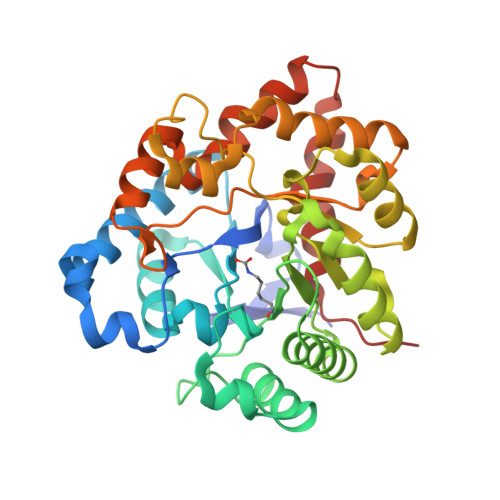Enhanced degradation of chemical warfare agents through molecular engineering of the phosphotriesterase active site.
Hill, C.M., Li, W.S., Thoden, J.B., Holden, H.M., Raushel, F.M.(2003) J Am Chem Soc 125: 8990-8991
- PubMed: 15369336
- DOI: https://doi.org/10.1021/ja0358798
- Primary Citation of Related Structures:
1P6B, 1P6C - PubMed Abstract:
The bacterial phosphotriesterase has been utilized as a template for the evolution of improved enzymes for the catalytic decomposition of organophosphate nerve agents. A combinatorial library of active site mutants was constructed by randomizing residues His-254, His-257, and Leu-303. The collection of mutant proteins was screened for the ability to hydrolyze a chromogenic analogue of the most toxic stereoisomer of the chemical warfare agent, soman. The mutant H254G/H257W/L303T catalyzed the hydrolysis of the target substrate nearly 3 orders of magnitude faster than the wild-type enzyme. The X-ray crystal structure was solved in the presence and absence of diisopropyl methyl phosphonate. The mutant enzyme was ligated to an additional divalent cation at the active site that was displaced upon the binding of the substrate analogue inhibitor. These studies demonstrate that substantial changes in substrate specificity can be achieved by relatively minor changes to the primary amino acid sequence.
Organizational Affiliation:
Department of Chemistry, P.O. Box 30012, Texas A&M University, College Station, TX 77842-3012, USA.


















